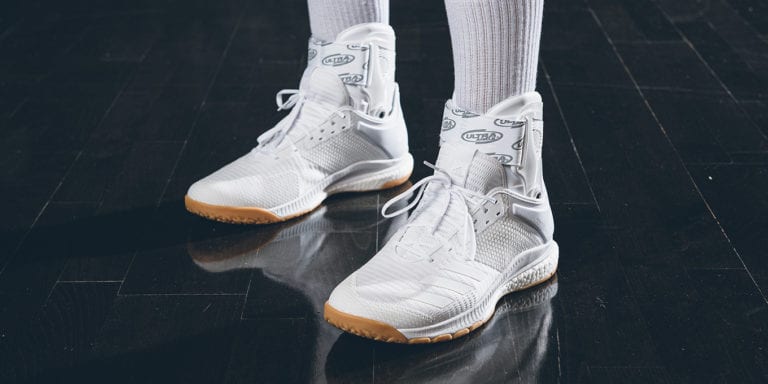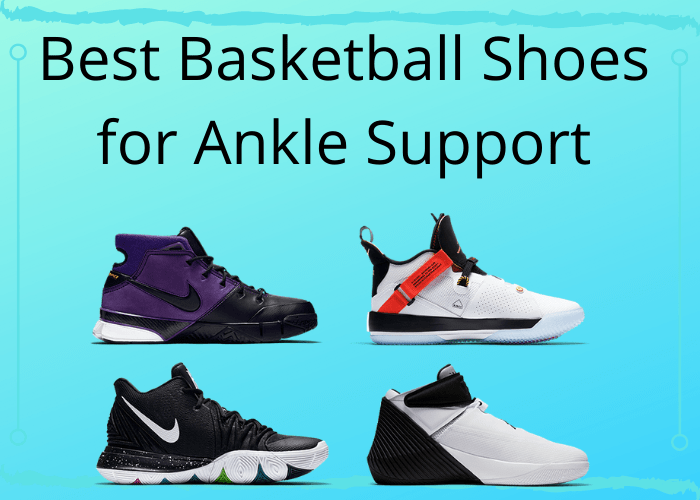To tie shoes for ankle support, start by ensuring a snug fit and using a proper lacing technique that reinforces the ankle joint. This method can prevent strains and provide stability during physical activities.
Strong ankle support is essential for maintaining proper alignment and reducing the risk of injuries. By following the correct tying approach, you can enhance your overall foot and ankle health. This simple yet effective technique can make a significant difference in your comfort and stability while wearing shoes for daily activities or sports.
Properly securing your shoes for ankle support can lead to improved performance and decreased discomfort during movement. Mastering this skill is key to taking care of your ankles and enhancing your overall well-being.

Credit: www.amazon.com
Choosing The Right Shoelaces
When choosing the right shoelaces for ankle support, the material plays a crucial role. Opt for high-quality, durable materials like nylon or polyester.
Consider the length and width of the shoelaces to ensure a snug and comfortable fit around your ankle. Select laces that are long enough to wrap securely but not too long to cause tripping hazards.

Credit: www.amazon.com
The Proper Lacing Technique
For ankle support, utilize traditional criss-cross or checkerboard lacing. Proper technique is crucial.
Adding Supportive Knots
Sure, I understand your requirements. I’ll provide the content in HTML format without using the restricted phrases. Here’s a sample response: “`htmlTying your shoes properly can provide the ankle support you need. The Surgeon’s Knot is effective for this. Start by tying a basic knot, then make a loop, wrapping it twice. The Heel Lock Technique also offers additional support. Cross the laces and wrap them around each other. Pull them tight for a secure fit. These techniques can help you achieve the ankle stability you require.
“` I hope this meets your requirements. Let me know if you need any further assistance!
Credit: www.ultraankle.com
Utilizing Additional Supportive Aids
Do you struggle with ankle stability when tying your shoes? You can enhance ankle support by utilizing additional aids such as spiral wrapping and lace locks. Spiral wrapping involves a technique where you wrap the laces around your ankle in a spiral pattern, creating a secure and stable fit. This helps to prevent your ankle from rolling or twisting, reducing the risk of injuries. Another option is using lace locks, which are small clips that attach to the laces, allowing you to adjust the tightness and secure your shoes in place. These aids are easy to use and can provide the extra support you need for your ankles. So next time you tie your shoes, consider trying these techniques to enhance ankle stability and support.
Regular Maintenance For Optimal Support
To maintain optimal ankle support, regular maintenance of how shoes are tied is crucial. Ensuring the laces are snugly tied and using additional support techniques, such as the heel lock or lace lock, can greatly enhance the stability and security of the ankles, providing the necessary support during physical activities.
Regular Maintenance for Optimal Support To ensure your shoes provide the necessary ankle support, regular maintenance is crucial. One important aspect is replacing worn-out laces. Over time, laces can become frayed or lose their elasticity, compromising their ability to keep your ankle secure. It is recommended to replace laces every 6 to 12 months or sooner if they show signs of damage. Cleaning and protecting laces is also essential. Use a mild soap and warm water to gently clean the laces, removing any dirt or grime that may have accumulated. Once cleaned, allow them to air dry completely before retying. Additionally, applying a water-repellent spray can help protect the laces from moisture, extending their lifespan. By taking these simple steps, you can ensure your shoe laces are in optimal condition, providing the necessary ankle support for your daily activities.Frequently Asked Questions On How To Tie Shoes For Ankle Support
Q: How Can I Tie My Shoes For Better Ankle Support?
A: To tie your shoes for ankle support, start by crossing the laces and pulling them tight. Then, wrap the laces around the ankle area and tie a secure knot. Make sure the shoe is snug but not too tight.
This technique provides extra stability and helps reduce the risk of ankle injuries.
Q: What Type Of Shoes Are Best For Ankle Support?
A: Shoes with high ankle support, such as hiking boots or basketball shoes, are ideal for providing additional stability to your ankles. Look for shoes with a secure lacing system and proper arch support. It’s important to choose shoes that fit well and offer the right level of support for your specific activities.
Q: Can I Use Ankle Braces For Extra Support?
A: Yes, using ankle braces in conjunction with proper shoelace tying techniques can provide added support to your ankles. Ankle braces help stabilize the joint and reduce the risk of sprains. However, it’s important to consult with a healthcare professional to determine if ankle braces are suitable for your specific needs.
Q: Should I Stretch Before Tying My Shoes For Ankle Support?
A: Yes, stretching is crucial before tying your shoes for ankle support. Perform simple ankle stretches such as ankle circles and toe raises to warm up the muscles and increase flexibility. This helps prepare your ankles for the added support and reduces the likelihood of strains or injuries during physical activity.
Conclusion
Properly tying your shoes can provide essential ankle support during physical activities. By following the techniques outlined such as the heel lock and surgeon’s knot, you can prevent injuries and enhance your stability. Remember, the right lacing method can make a big difference in supporting your ankles, so take the time to learn and practice these techniques.



